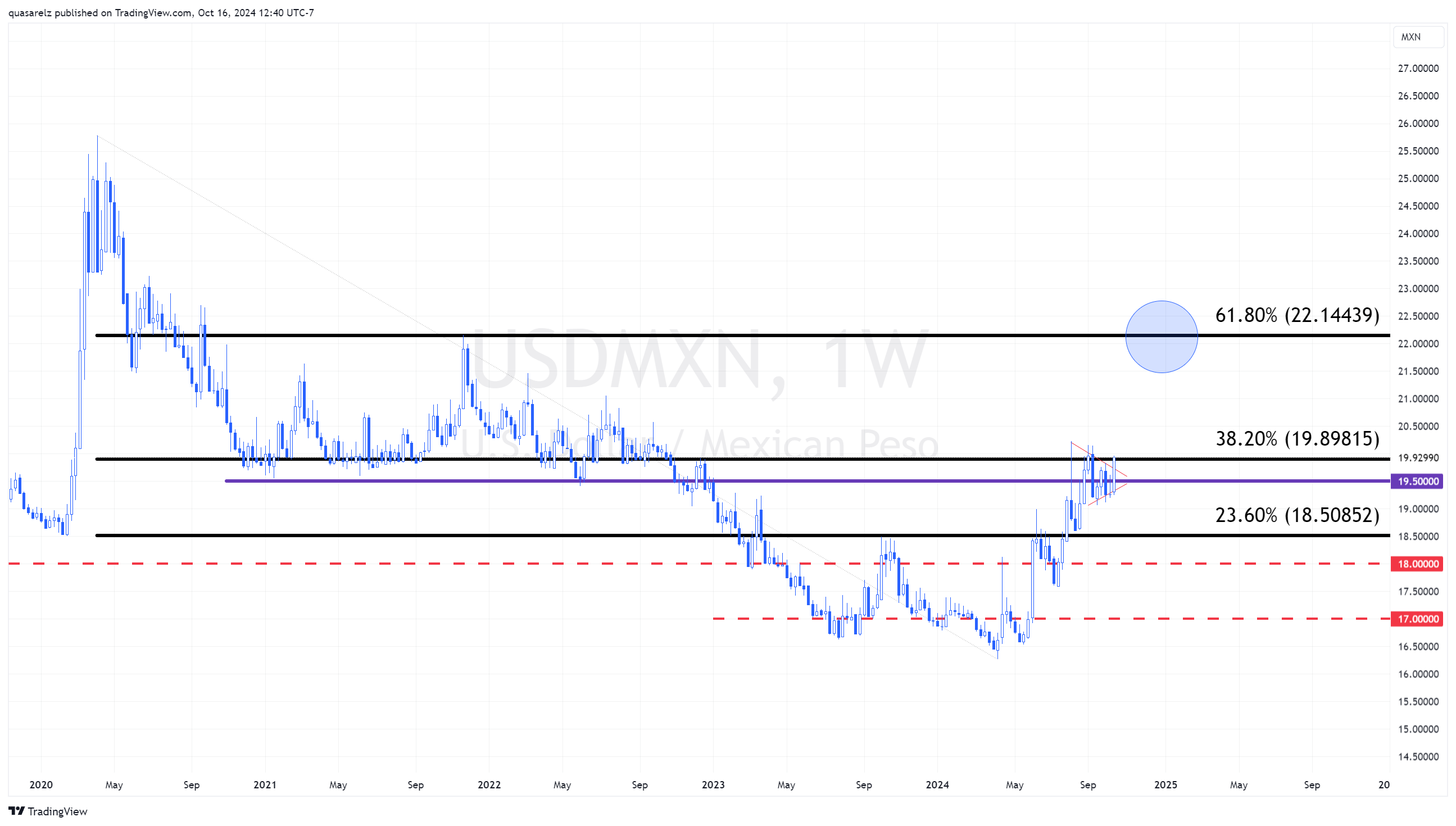Analysis
Mexican Peso Under Pressure: Hovering Around 20 Pesos Per Dollar

On the global stage, emerging market currencies are under pressure due to growing economic uncertainty in China. Recent data from the Asian giant has shown signs of a slowdown, and the lack of substantial fiscal stimulus from its government has heightened concerns about its growth. As one of the main engines of the global economy, China significantly influences investors' risk perception. A slowdown in its economy could reduce demand for raw materials and negatively affect exporting countries like Mexico.
While the international environment has been unfavorable, internal factors are also contributing to the pressure on the peso. The recent strength of the U.S. dollar has exerted additional pressure on the currency. As expectations that the Federal Reserve will adopt a more aggressive monetary policy with rate cuts by the end of the year diminish, the dollar has gained appeal. This dynamic has sparked demand for dollar-denominated assets, further weakening currencies from countries like Mexico.
Domestically, political and trade tensions with the United States have resurfaced as a significant risk factor. Former President Donald Trump has improved his position in recent electoral polls, rekindling concerns about potential protectionist policies should he return to the presidency. Trump has suggested the possibility of imposing tariffs of over 200% on vehicles imported from Mexico to protect the U.S. automotive industry. Given that the automotive sector is one of the pillars of the Mexican economy and a key component in the trade relationship under the USMCA, such measures could have profound repercussions on bilateral trade and investor confidence.
Meanwhile, President Claudia Sheinbaum's efforts to generate confidence in the business community have faced challenges. Despite her recent meeting with 240 U.S. and Mexican business leaders, where she sought to reaffirm her administration’s commitment to respecting institutions and fostering new investments, questions remain about the policies that will be implemented. Historically, investment announcements in protocol settings do not always translate into concrete actions. The case of Tesla’s "Gigafactory" in Nuevo León, announced over a year ago without significant progress, exemplifies the difficulties in materializing foreign investments in the country. Judicial reforms and guarantees of the rule of law are critical aspects investors consider when evaluating their commitments in Mexico.
Looking ahead, the upcoming data on China's Gross Domestic Product will be a key indicator for the markets. A performance below expectations could increase risk aversion and further impact currencies tied to economic growth and emerging markets. This could intensify pressure on the Mexican peso and similar currencies.
Technical Analysis USD/MXN
Weekly USD/MXN Chart
From a technical standpoint, the Mexican peso is once again nearing the doors of an extremely critical resistance area: the confluence between the 38.20% Fibonacci retracement of the bearish trend from all-time highs and the key psychological level of 20 pesos per dollar. This level is significant because it represents an area where investors may decide whether upward pressure from the dollar will continue.
If this level is breached, unfortunately for the Mexican currency, the next significant resistance level would not appear until 22 pesos per dollar, which would imply a further considerable depreciation. This will largely depend on the outcome of the upcoming U.S. elections. Recent trading has demonstrated a well-known continuation flag pattern, which could be a technical factor supporting a possible break of the 20 pesos per dollar level.
Conclusion
In summary, the Mexican peso is at a critical point, influenced by a combination of global uncertainties and domestic challenges. The Chinese economy, political dynamics in the United States, and domestic policies in Mexico create a complex outlook. As these events unfold, volatility in the exchange rate could increase, presenting both risks and opportunities for investors.
The material provided here has not been prepared in accordance with legal requirements designed to promote the independence of investment research and as such is considered to be a marketing communication. Whilst it is not subject to any prohibition on dealing ahead of the dissemination of investment research we will not seek to take any advantage before providing it to our clients.
Pepperstone doesn’t represent that the material provided here is accurate, current or complete, and therefore shouldn’t be relied upon as such. The information, whether from a third party or not, isn’t to be considered as a recommendation; or an offer to buy or sell; or the solicitation of an offer to buy or sell any security, financial product or instrument; or to participate in any particular trading strategy. It does not take into account readers’ financial situation or investment objectives. We advise any readers of this content to seek their own advice. Without the approval of Pepperstone, reproduction or redistribution of this information isn’t permitted.
